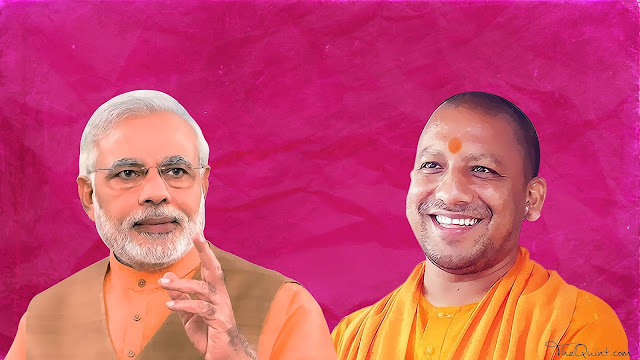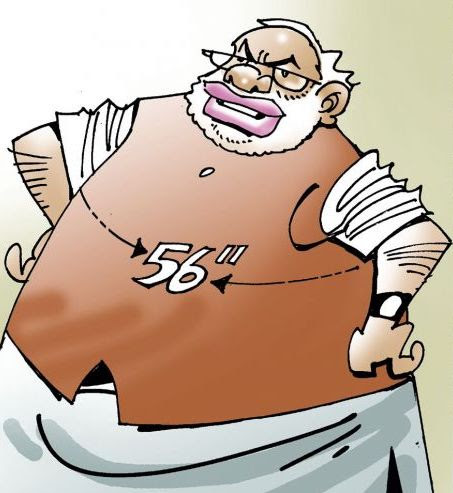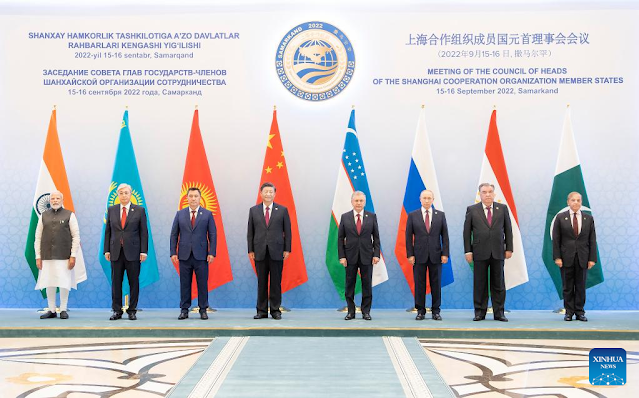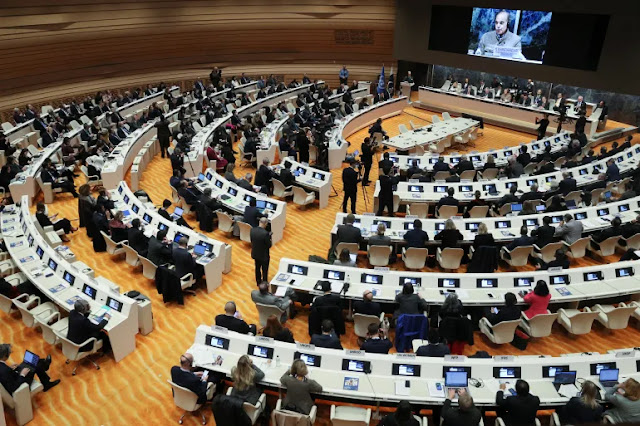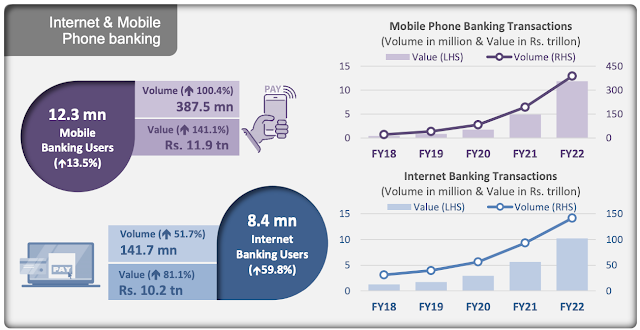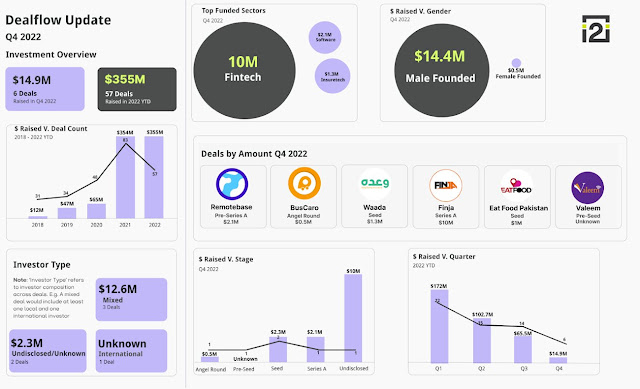The Pakistan Air Force's Retired Air Vice Marshal Shahzad Chaudhry has recently penned an op-ed for The Express Tribune newspaper calling on his country to make peace with India. He argues that "India is relevant to the world", implying that Pakistan is not. Chaudhry believes that the "gap between Pakistan and India is now unbridgeable". Chaudhry concludes his piece with the following recommendation: "It is time to recalibrate our policy towards India and be bold enough to create a tri-nation consensus, along with China, focusing on Asia to be the spur for wider economic growth and benefit".
History of India-Pakistan Peace Talks:
While I completely support Chaudhry's call for Pakistan to make peace with India, I do wonder why India's Hindu Supremacist Prime Minister Narendra Modi would even seriously entertain such a thought if "India is relevant to the world" and Pakistan is not? And if Modi does agree to talks, what kind of peace would come out of such talks? Would it be similar to Bangladesh-India peace based on client-patron relationship? Retired senior Indian officials like Shyam Saran and AS Dulat have blamed Indian security establishment for past failures to reach a peace deal with Pakistan.
I also question Chaudhry's idea of creating "a tri-nation consensus" with India and China. Why would China agree to such an arrangement while both Asian giants are seeking to establish regional hegemony? Why wouldn't China pursue its own version of Monroe Doctrine in Asia?
Let me expand on the above two points about "relevance" of India and Pakistan and "tri-nation consensus" with China.
Pakistan's Global Relevance:
Chaudhry argues that "India is relevant to the world". So is Pakistan. Indian Prime Minister Narendra Modi's government has pursued a policy of internationally isolating Pakistan for the last 8 years. Indian diplomats and mainstream media have engaged in a concerted campaign to hurt Pakistan diplomatically and economically during this period. Even the sport of cricket has not been spared. All of the available evidence suggests that this Indian campaign has failed.
A prominent Indian journalist Shekhar Gupta has recently summarized the reasons for the Modi government's failure to achieve its objectives relative to Pakistan. Gupta argues that Pakistan is too important to be ignored or isolated by the international community. He says, "Pakistan is too big in terms of population, too powerful militarily, too Muslim, too nuclear and too well located to be isolated".
 |
| Pakistan PM Shahbaz Sharif with President and Mrs. Biden. Source: White House |
Here are some of the key points Shekhar Gupta makes in episode 1093 of his show Cut The Clutter :
1.Pakistan is our most important neighbor. We must focus on Pakistan.
2, We can not ignore Pakistan in India because the world can not ignore Pakistan
3. The Western world has an intrinsic relationship with Pakistan which doesn't go away
4. The West does not see Pakistan as so useful to them today and yet Pakistan can not be isolated.
5. You can see all the indications that Pakistan is not isolated.
6. A lot of (Indian) TV channels say Pakistan is isolated but the evidence doesn't support it.
7. Pakistan FM visited Washington and met his counterpart Tony Blinken.
8. Pakistan Army Chief has received a warm welcome at the US Defense Dept and met US Defense Secretary Lloyd Austin. Bajwa matters more than the Pakistan Defense Minister. Nobody knows his name.
9. US Ambassador to Pakistan Donald Blome, a career diplomat, has visited "Pakistan Occupied Kashmir" and called it Azad Kashmir...Azad means free.
10. When the chips are down in the region Pakistan is the ally Americans reach out to.
11. The US does not want Pakistan to drift to China.
12. German foreign minister Annalena Baerbock has spoken about Kashmir...the K word. She has asked for the UN to help solve the Kashmir issue.
13. Pakistan Army Chief General Bajwa is not a warmonger. He wants to normalize ties with India. He wants to trade with India. He doesn't want Faiz Hameed to succeed him. He used to be the ISI chief and took credit for the Taliban victory in Afghanistan. Do the Americans have leverage here?
14. Where does Pakistan's unique power come from? Why can't Pakistan be ignored? Why can't Pakistan be isolated?
15. The Indian public needs to understand it.
16. Pakistan is too big in terms of population, too powerful militarily, too Muslim, too nuclear and too well located to be isolated.
17. Pakistan has the 5th largest population and its population is growing fast. It could soon exceed Indonesia to become the largest Muslim nation in the world.
18. Pakistan has the 5th strongest military in the world.
19. In terms of nuclear weapons, Pakistan has the 4th largest nuclear arsenal in the world.
20. Pakistan is too well located to be isolated. It has a geo-strategic location. Pakistan is the western gateway to China. Pakistan opened China's ties with the US. And then helped the US defeat the Soviet Union.
21. The factors that made Pakistan such a strong ally to the US still exist. Don't blame the Pakistanis for it.
22. India is not willing to commit to an alliance with the US.
23. Imran Khan tried to change Pakistan's foreign policy to be more like India's but he failed.
Tri-nation Consensus:
Prime Minister Modi's revocation of Article 370 and annexation of Jammu and Kashmir as Indian union territories have angered not just Pakistan but also China. Modi's actions are not only an affront to the people of Jammu and Kashmir but also in clear violation of India's international and bilateral obligations under United Nations charter and the Simla Accord. China, a permanent member of the United Nations Security Council, lays claim to the Ladakh region. It has objected to India making it a union territory.
Since Modi's annexation of disputed territories of Jammu, Kashmir and Ladakh, China has dramatically stepped up pressure on India in Ladakh. China has increased its troop presence, killed and injured dozens of Indian soldiers and taken at least a thousand kilometers of territory claimed by India. As a result, India has had to move troops from the line of control (LoC) with Pakistan to the Line of Actual Control (LAC) with China.
Indian Congress Party leader Rahul Gandhi summarized the situation well when he said, "China has taken our land. They are beating out soldiers. The threat of China Is clear. And the government is hiding it, ignoring it. China is preparing for an offensive in Ladakh and Arunachal. And the government of India is sleeping".
India-Bangladesh Ties:
India's relations with Bangladesh are essentially patron-client relations. This fact became amply clear when Bangladeshi Prime Minister Shaikh Hasina recently visited New Delhi to seek political and economic assistance from the Indian Prime Minister Narendra Modi.
Modi-Hasina Delhi summit was preceded by Bangladesh Foreign Minister Abdul Momen's trip to India where he said, "I've requested Modi government to do whatever is necessary to sustain Sheikh Hasina's government". Upon her return from India, Sheikh Hasina told the news media in Dhaka, "They (India) have shown much sincerity and I have not returned empty handed". It has long been an open secret that Indian intelligence agency RAW helped install Shaikh Hasina as Prime Minister of Bangladesh, and her Awami League party rely on New Delhi's support to stay in power. Bangladesh Foreign Minister Abdul Momen has described India-Bangladesh as one between husband and wife. In an interview with Indian newspaper 'Ajkal,' he said, "Relation between the both countries is very cordial. It's much like the relationship between husband and wife. Though some differences often arise, these are resolved quickly." Both Bangladeshi and Indian officials have reportedly said that Sheikh Hasina "has built a house of cards". India-Pakistan Gap:
There's no question that Pakistan is in the midst of a major economic crisis. The country's economic performance is dismal right now. At the same time, it must be acknowledged that Pakistan, with its youngest population in Asia, has a bright future ahead if its leaders can resolve the internal political situation.
In fact, Goldman Sachs analysts Kevin Daly and Tadas Gedminas project Pakistan's economy to grow to become the world's
sixth largest by 2075. In a research paper titled "
The Path to 2075", the authors forecast Pakistan's GDP to rise to $12.7 trillion with per capita income of $27,100. India’s GDP in 2075 is projected at $52.5 trillion and per capita GDP at $31,300. Bangladesh is projected to be a $6.3 trillion economy with per capita income of $31,000. By 2075, China will be the top global economy, followed by India 2nd, US 3rd, Indonesia 4th, Nigeria 5th and Pakistan 6th. The forecast is based primarily on changes in the size of working age populations over the next 50 years.
Economic Impact of Slower Population Growth:
Daly and Gedminas argue that slowing population growth in the developed world is causing their economic growth to decelerate. At the same time, the economies of the developing countries are driven by their rising populations. Here are four key points made in the report:
1) Slower global potential growth, led by weaker population growth.
2) EM convergence remains intact, led by Asia’s powerhouses. Although real GDP growth has slowed in both developed and emerging economies, in relative terms EM growth continues to outstrip DM growth.
3) A decade of US exceptionalism that is unlikely to be repeated.
4) Less global inequality, more local inequality.
Demographic Dividend:
With rapidly aging populations and declining number of working age people in North America, Europe and East Asia, the demand for workers will increasingly be met by major labor exporting nations like Bangladesh, China, India, Mexico, Pakistan, Russia and Vietnam. Among these nations, Pakistan is the only major labor exporting country where the working age population is still rising faster than the birth rate.
Over 10 million Pakistanis are currently working/living overseas, according to the Bureau of Emigration. Before the COVID19 pandemic hit in 2020, more than 600,000 Pakistanis left the country to work overseas in 2019. Nearly 700,000 Pakistanis have already migrated in this calendar year as of October, 2022. The average yearly outflow of Pakistani workers to OECD countries (mainly UK and US) and the Middle East was over half a million in the last decade.
World's 7th Largest Consumer Market:
Pakistan's share of the working age population (15-64 years) is growing as the country's birth rate declines, a phenomenon called demographic dividend. With its rising population of this working age group, Pakistan is projected by the World Economic Forum to become the world's 7th largest consumer market by 2030. Nearly 60 million Pakistanis will join the consumer class (consumers spending more than $11 per day) to raise the country's consumer market rank from 15 to 7 by 2030. WEF forecasts the world's top 10 consumer markets of 2030 to be as follows: China, India, the United States, Indonesia, Russia, Brazil, Pakistan, Japan, Egypt and Mexico. Global investors chasing bigger returns will almost certainly shift more of their attention and money to the biggest movers among the top 10 consumer markets, including Pakistan. Already, the year 2021 has been a banner year for investments in Pakistani technology startups.
India's Kautilya Doctrine:
“Every neighboring state is an enemy and the neighboring state's neighbor is a friend.” ― Kautilya, The ArthashastraThe name of Kautilya, meaning crooked, is invoked by former Indian foreign secretary Shyam Saran's book “How India Sees the World: Kautilya to the 21st Century”. This invocation of Kautilya in the title of the book makes the above quote about "neighboring state is an enemy" particularly relevant to how Indian policymakers like Shyam Saran see Pakistan and Afghanistan.
Kautilya presented a theory of international relations called the “circle of states,” or Rajamandala. It says hostile states are those that border the ruler’s state, forming a circle around it. In turn, states that surround this set of hostile states form another circle around the circle of hostile states. This second circle of states can be considered the natural allies of the ruler’s state against the hostile states that lie between them. Put more succinctly, “the enemy of my enemy is my friend.”
Pakistanis like AVM Shahzad Chaudhry must understand that India's foreign policy has always been and continues to be guided by the Kautilya Doctrine.
